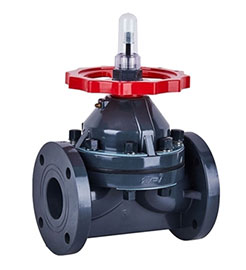How to Test a Diaphragm Valve?
The Diaphragm valve is a common control valve, widely used in chemical, pharmaceutical, food, and other fields. To ensure the normal operation and safe performance of diaphragm valves, testing is a crucial part. The ATO shop will introduce the diaphragm valve test methods and precautions to ensure its stability and reliability in industrial production.
Material Preparation
Before the diaphragm valve test, the following materials need to be prepared: water source or appropriate test medium. Measuring instruments, such as manometers, flow meters, etc. Hand tools, such as wrenches, screwdrivers, etc. Safety protection equipment, such as gloves, goggles, etc.

Appearance Inspection
First, inspect the appearance of the diaphragm valve to ensure that there is no obvious damage or leakage of the valve body, diaphragm, connections, etc. If any abnormality is found, it should be repaired or replaced in time.
Diaphragm Valve Test
- Leakage Test: Make sure the diaphragm valve is in the closed state and close all connected valves. Fill the diaphragm valve with gas through the gas source, gradually increase the pressure to the rated pressure, and observe whether there is gas leakage. Apply soapy water to the connections and critical parts of the diaphragm valve and check whether there are gas bubbles to determine whether there is any gas leakage.
- Pressure Test: Diaphragm valves need to withstand a certain amount of pressure under normal operating conditions, so pressure testing is an essential step. Gradually increase the pressure of the diaphragm valve to the rated pressure, continue for some time, and then slowly reduce the pressure, observe the response of the valve to ensure that it works properly under different pressures.
- Overpressure Test: The overpressure test is to verify the safety performance of the good quality diaphragm valve under extreme conditions. Gradually increase the pressure of the valve to more than the rated pressure, and observe whether the valve is abnormal, to ensure that it has an overpressure protection function.
- Flow Test: Flow is one of the key performances of the diaphragm valve, flow tests can verify the fluid control ability of the valve. By adjusting the valve and setting different flow rates, use a flow meter to measure the actual flow rate and compare it with the expected value. After the flow test in the normal working flow direction, open the valve in the reverse direction and carry out the flow test again to ensure that the valve can work normally in both forward and reverse flow situations.
Diaphragm Valve Troubleshooting
| Possible Malfunctions | Causes | Elimination Method |
| Handwheel operation is not flexible | ①Bent valve stem | ①Replace the valve stem |
| ②Thread damage | ②Repair the threads and add lubricant | |
| Diaphragm valve can not automatically open and close | ①Low air pressure | ①Increase the air supply pressure |
| ② spring tightening force is too large | ②Reduce the spring tightening force | |
| ③Rubber diaphragm damage | ③Replace the diaphragm | |
| Leakage at the connection between valve body and valve cover | ① Loose connecting bolts | ①Tighten the connecting bolts |
| ②Rupture of rubber layer in the valve | ②Replace the valve body |
Precautions
- Before installing the diaphragm valve, the operating conditions of the pipeline should be carefully checked to see if they are in line with the specified operating range of the valve, and the inner cavity should be cleaned to prevent dirt from blocking or damaging the sealing parts.
- The rubber lining layer and rubber diaphragm surface should not be painted grease items to prevent rubber dissolution, affecting the service life of the diaphragm valve.
- The handwheel or transmission mechanism is not allowed to be used for lifting, and collision is strictly prohibited.
- When manually operating the diaphragm valve, do not resort to auxiliary levers to prevent excessive torque and damage to the driving parts or sealing parts.
- Diaphragm valves should be stored in a dry and ventilated room, and stacking is strictly prohibited. The channels at both ends of the stock diaphragm valves must be sealed, and the opening and closing parts should be in a slightly open state.
Through the above test methods and precautions, the performance of the diaphragm valve can be comprehensively examined to ensure that it plays a good control role in industrial production and improves production efficiency and safety. As an efficient and reliable valve design, it has great potential to improve fluid control efficiency and reduce maintenance costs. With future innovations, we look forward to seeing diaphragm valves play a broader role in more industries and provide superior fluid control solutions for users worldwide.

